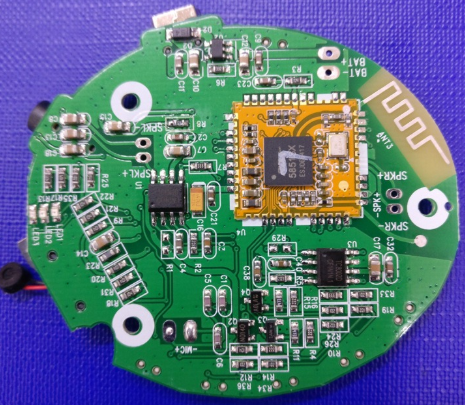Introduce common methods for analyzing PCBA board failures.
Modern electronic assembly technology is mainly developed with PCBA as the object. Therefore, the research on reliability of electronic assembly technology is also mainly developed with the failure phenomenon that occurs on PCBA. The failure phenomena of PCBA can be divided into two categories: those that occur during the production process and those that occur during the user's service.
(1) Failure phenomena of PCBA (internal or surface) during the manufacturing process: such as plate explosion, delamination, surface excess, ion migration and chemical corrosion (rust), etc.
(2) Various failure modes and failure manifestations on PCBA during user service: such as virtual welding, solder joint brittle fracture, deterioration of microstructure in solder joint, and reliability degradation.
The purpose of failure analysis
Failure analysis is the process of determining the cause of the failure, collecting and analyzing data, and summarizing and eliminating the failure mechanism that caused the failure of a particular device or system.

The main purpose of failure analysis is:
▪ Find out the cause of the failure;
▪ Tracing the adverse factors in process design, manufacturing process, and user service;
▪ Propose corrective measures to prevent the recurrence of failures.
Through the accumulated results of failure analysis, we will continuously improve the process design, optimize the product manufacturing process, and improve the usability of the product, so as to achieve the goal of comprehensively improving the reliability of the product.
PCBA failure rate curve
1. The failure rate curve of PCBA products includes the following three levels, namely:
▪ Component failure rate curve: Through forced aging of components before leaving the factory, the failure rate of components during the user's service period can be effectively reduced.
▪ Component supply life curve: It describes the service life of the component to the user, and it has a significant impact on the reliability of the constituted system.
▪ PCBA assembly failure rate curve: it is affected by three parts: SMD incoming material life, SMD assembly life and solder joint life. At this time, the life of PCBA basically depends on the life of solder joints. Therefore, ensuring the welding quality of each solder joint is a key link to ensure the high reliability of the system.
2. PCBA typical instantaneous failure rate curve
The typical instantaneous failure rate of PCBA is abbreviated as PCBA typical failure rate. The instantaneous failure rate is the probability that the PCBA will fail in a unit of time after working to time t. The typical instantaneous failure rate curve of PCBA consists of three areas: premature aging zone, product service zone and aging zone.
The levels, principles and methods of PCBA failure analysis
1. Levels of failure analysis
In the production and application of electronic products, the control and analysis of PCBA and solder joint failures are basically the same as the reliability control and analysis methods of other systems.
2. The principle of failure analysis-the basis of mechanism reasoning
▪ On-site information;
▪ Retest (failure mode confirmation) result analysis;
▪ The failure mechanism of the specific process and structure of the object;
▪ The failure mechanism related to the specific environment;
▪ The relationship between failure mode and failure mechanism;
▪ Long-term accumulation of relevant knowledge and experience.
3. Failure analysis method
For the methods used in PCBA failure analysis, some experts in the PCBA industry have summarized a good analysis model.
The above is the common method of analyzing PCBA board failure introduced by PCBA factory.